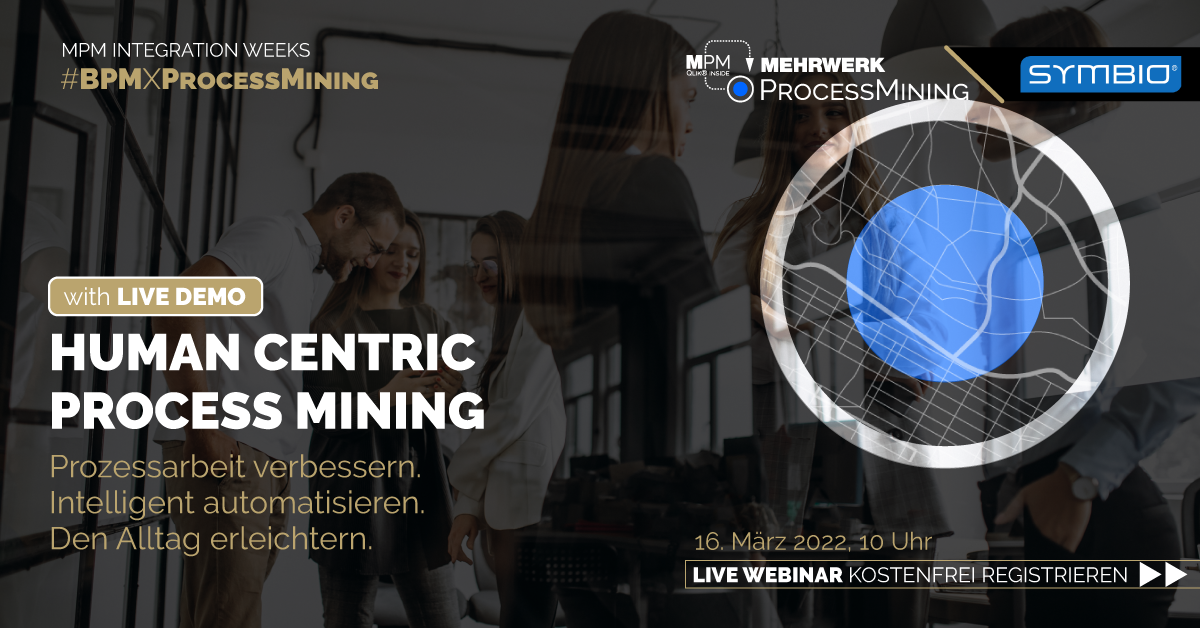 As the complexity of business processes has grown, so have the requirements for business process analysis. Typically, process management techniques are based on process models or process documentation. These have the aim of representing the operational processes as closely as possible to reality. However, with the establishment of the innovative technology of Process Mining, which reveals the actual process flows in systems, experience has now shown that reality often deviates from the hand-crafted models. It is therefore not sufficient to rest on process models that represent the theoretical should-be state. Nevertheless, process models and classic Business Process Management (BPM) form an important starting point. We explain why BPM and Process Mining are real team players.
As the complexity of business processes has grown, so have the requirements for business process analysis. Typically, process management techniques are based on process models or process documentation. These have the aim of representing the operational processes as closely as possible to reality. However, with the establishment of the innovative technology of Process Mining, which reveals the actual process flows in systems, experience has now shown that reality often deviates from the hand-crafted models. It is therefore not sufficient to rest on process models that represent the theoretical should-be state. Nevertheless, process models and classic Business Process Management (BPM) form an important starting point. We explain why BPM and Process Mining are real team players.
The value of process models: Map and orientation guide
Process models as a basis for conformance checking with Process Mining
Conformance checking using Process Mining compares the behaviour occurring in reality with the behaviour captured in the process model. Such a comparison requires the best possible process model as well as high-performance algorithms. The more realistic the model, the better the compliance and/or fitness check.
Process models as an aid to the interpretation of Process Mining analyses
In principle, Process Mining analyses are also possible without reference models. However, existing process models provide an important interpretation aid. Imagine you have to analyse live traffic on roads without an underlying map – detecting wrong-way drivers, driving on forbidden roads as well as unnecessary detours etc. would be much more difficult.
PROCESS MINING
[ˈprəʊ.ses ˈmaɪ.nɪŋ], the; (Business Process Discovery)
Automated business process analysis - with all relevant key figures - based on digital traces in IT systems. Process knowledge contained in data, implicit and otherwise hidden is visualized and thus tangible and transportable.
The "live traffic" analysis with Process Mining
No two opinions: the objective reality
One of the most important achievements of Process Mining is the factor of objectivity. Process Mining does not allow two opinions, but mercilessly reflects reality: Where are time-consuming loops being turned? Where does the process stick? Which process variants are emerging? How good is the automation rate really? Process Mining even provides the answer to the question WHY is it all like this - thanks to automated root cause analysis.
Conformance checking use cases.
A typical use case is compliance checking, i.e., verifying compliance with regulations (for audits, fraud detection, etc.). Compliance checking helps to verify that business processes are executed within certain boundaries set by managers, governments or other parties of interest and regulations.
More quality for process documentation
The knowledge gained from Process Mining analyses can in turn be incorporated into the process model, so that the quality of the process documentation increases. Thus, a cross-fertilization of technologies takes place, which ensures more process quality as well as security for organizations and employees.
Conclusion – BPM & Process Mining as team players
The challenge of verifying to what extent the operational process matches the process model is important for process management, process improvement and compliance. BPM software and Process Mining complement each other beautifully for a holistic and objective view. In all process management projects, however, the human factor in particular should not be forgotten in addition to the accompanying software deployment: For more quality in processes, people, processes and analysis must interact intelligently.
Webinar on Demand | Sounds exciting, but abstract? We kindly invite you to our webinar on demand (language: German):

